6/25, Saturday. After a good night’s sleep at the G Hotel, we checked out at a reasonable hour and walked to the train station, with bags, to catch our 9:12 train up to Bologna. Have to say, it’s easy to think ill of hotels and motels next to train and bus stations but this hotel was absolutely first class. Clean, great staff, wonderful amenities from superb beds to fast internet. Unfortunately, the next place we stayed was not so great. Anyway, nice accommodations on the first train out of Pescara, a Frecciarossa or Red Arrow, with nice seats, coffee service, etc. It was a sunny morning and even though it has been warm and dry here in Italy, the countryside was green and beautiful. The Sunflowers were eating it up.
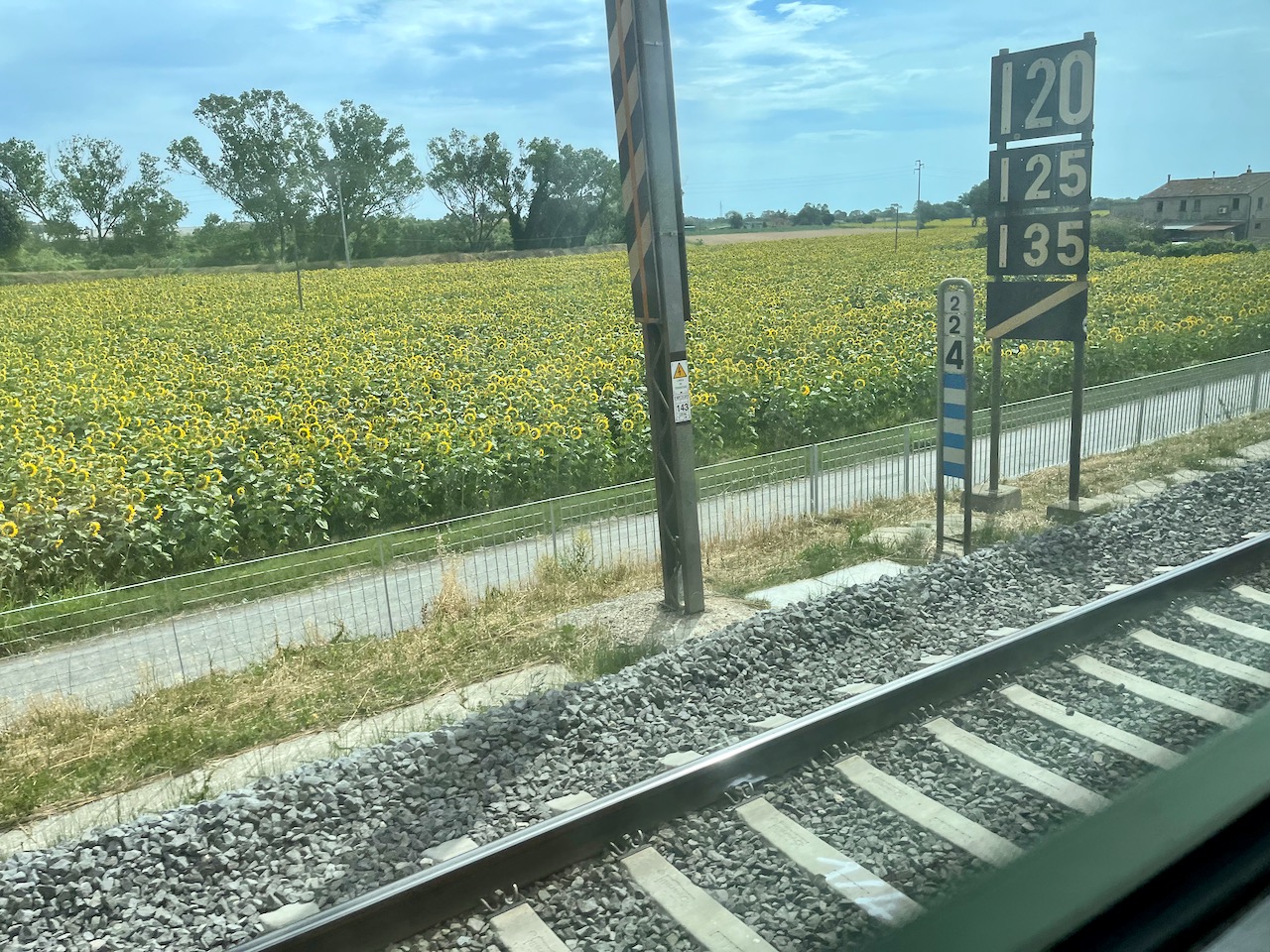
At Bologna where we had changed trains a few times in the past, we stepped off the train and crossed over to the adjacent platform where after waiting a few minutes, we boarded a Regionale for the ride up to Piacenza. A little more crowded but still comfortable enough for the hour and a half trip. Contrary to what we, and maybe you, may have thought in the past about train schedules and other time sensitive matters in Italy, the latest “slow life” and “slow eating” trends have nothing to do with slowing down the trains. Every train we used on this trip has been on schedule. Okay, there was one day when the union in one of the Southern areas went out on strike but here, those strikes are more a matter of reminding everyone, particularly government, that the unions do have power. We have yet to hear a word about more pay or better hours. It’s been to make the point — “remember us and what we can do.” And there is always a warning a day or two in advance. We were affected once up in Cinque Terre but with the warning, we just left the town the evening prior and spent a night in Pisa!
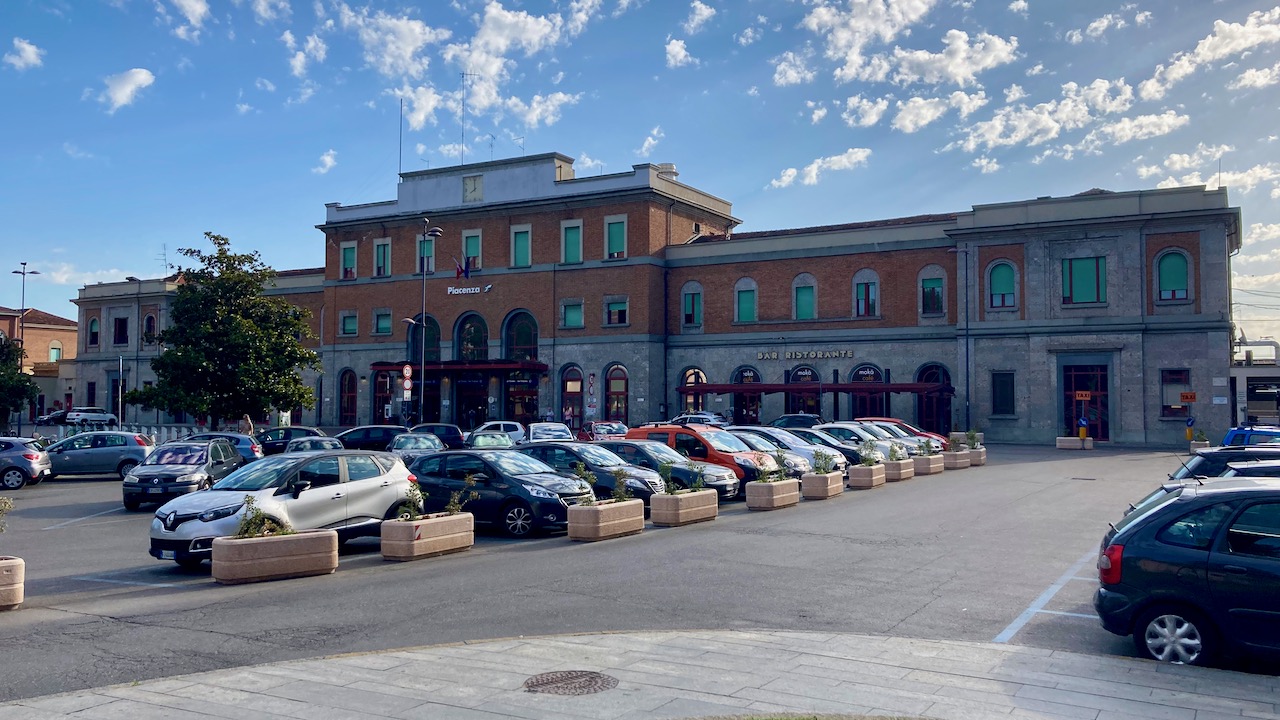
Regardless, the train station in Piacenza was waiting for us. Even though it was only about a kilometer away, we grabbed a cab to our hotel as the heat had been building steadily these past few weeks and on this day, by midday it was in the 80s. We travel pretty light nowadays but still, hauling bags is never fun. So, ensconced in our room, we headed out to do a little sightseeing. The town is old, created around 200 B.C.E. by the Romans of course. Now in this blog entry, there are going to be a few test questions. The first deals with this photo and the founding of Rome, even though the blog and this statue and photo are about Piacenza. Who are the two boys suckling on the female wolf and what is their significance to Rome?
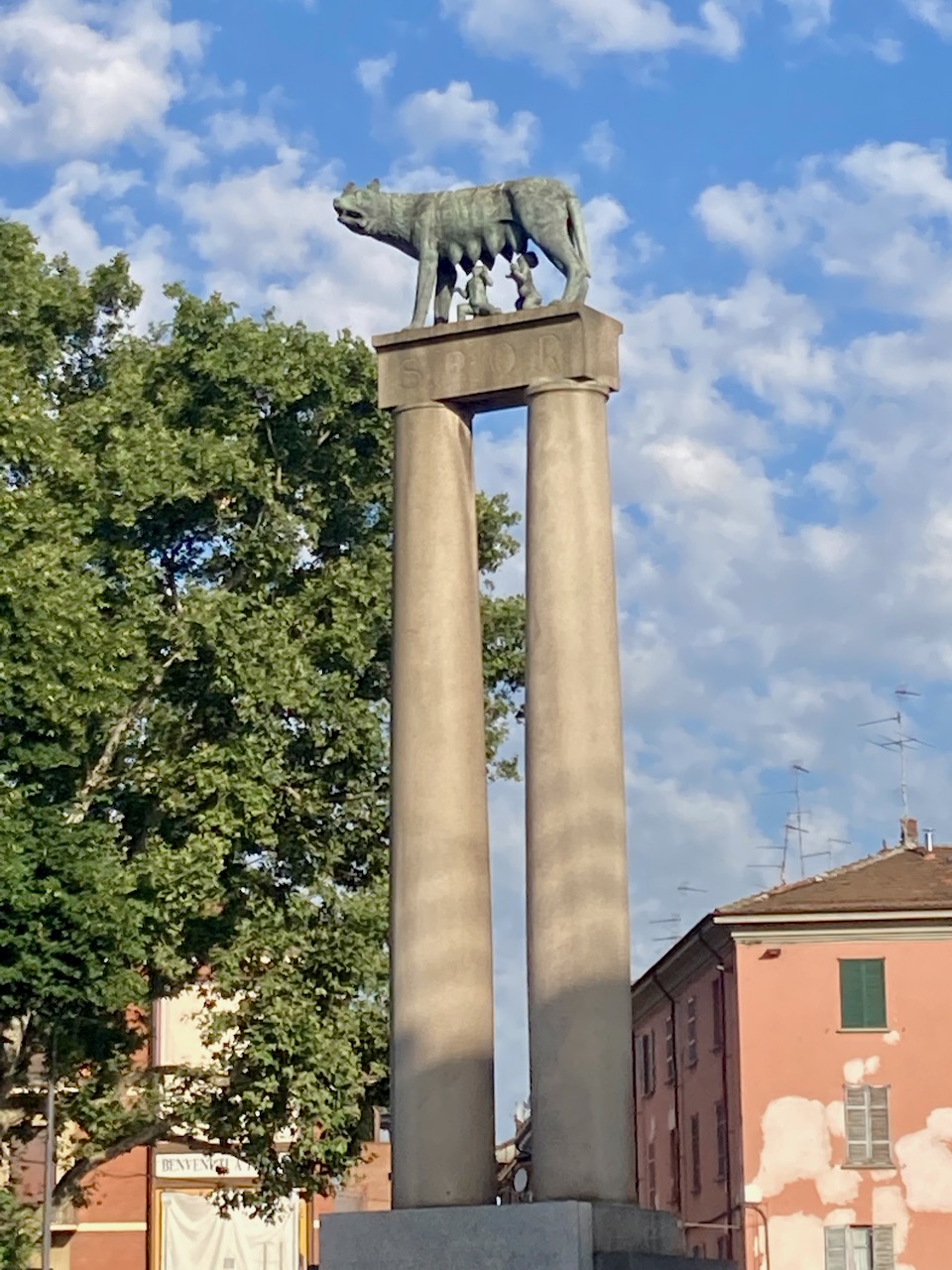
The Monument to the Wolf is located at a roundabout on Via Roma so we headed down that street towards the center of town. On the way, we noted many sights we planned to visit later. One thing we noted was a very large number of plastic water bottles laying at the base of many building walls or next to signs. Any ideas? We saw this in many of the larger cities in Abruzzo but none at all up in Basel. Answer coming soon.
After the equivalent of perhaps 10 blocks, we came to a park. Glancing over our shoulder we found that on one end there is a church but its front facade is hidden by some large trees so photos were not practicable. We were there; we went in. I admit we were drawn to the crypt since we had not seen many in our travels in Italy. Okay – yes, there is a crypt in the Basilica of Saint Peter in Vatican City. Anyway, San Savino is the saint for whom this church is dedicated. Here’s the main altar with the crypt beneath.

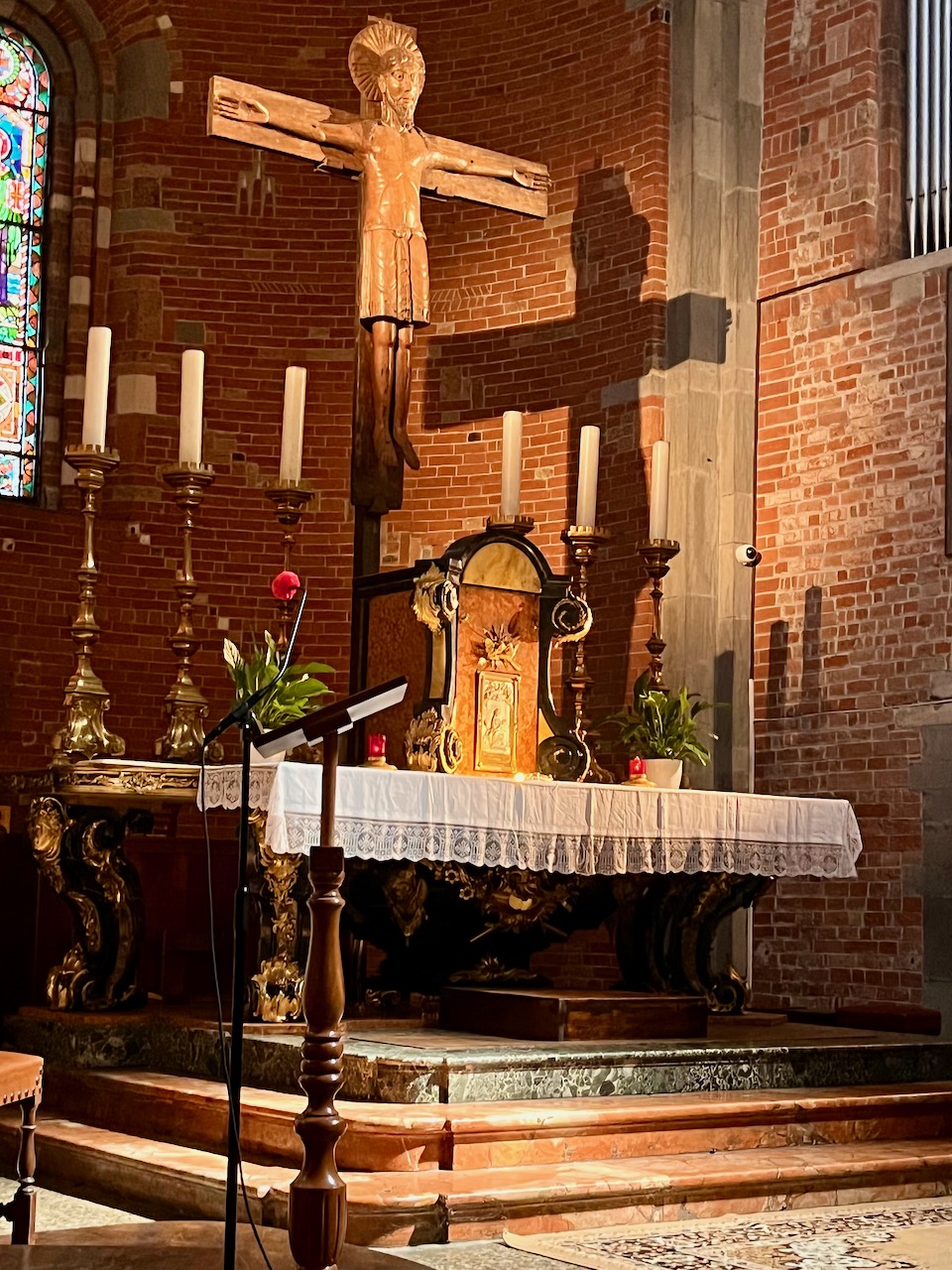
The first Savino Church was constructed at the end of the Fourth Century. In the 9th and 10th Centuries, the church was destroyed twice by raiding Magyars — Hungarians. The current church was consecrated in 1107. The wooden crucifix is from the 12th Century. There are some very nice mosaics in the floor down below in the crypt.

Diagonally across the park from the church was our Piacenza bar! We ended up at this bar each of the nights we were in town, in part because there was a good bartender, in part because a dozen men were playing cards and doing the Italian conversation thing where it sounds like they are arguing with each other and about to fight and in part because there were a couple of locals who talked with us.
From the bar, we started walking around again and found the Duomo and as our luck would have it, another wedding! Jim asked about going inside but I said that since we are neither Elon Musk nor George Clooney, maybe we should skip this one. The Duomo is really large and in fact, there were two churches very near each other making it difficult to figure out which was which. And Google maps labelled them both “Duomo.” Research says that the cattedrale is the home church of the diocese and where the bishop is based. In Italy, they are also called duomos. The difference? The cathedral is the cathedral only when it serves as the “home” for the diocese. If the bishop and administrative center of the diocese move to another church, the new church becomes the cathedral and a duomo. However, the former duomo or cathedral may retain the title duomo for historical and social purposes.
So then there was the wedding. Our first clue was that the piazza seemed to have more people sitting around than we would have expected. The second and certain clue was the car showing up with these fancily dressed folk getting out. Then the white dress. Actually, we were around at a side door of the cathedral thinking about going in when we discovered there was about to be a wedding. And, guess who showed up wanting our help, asking “Is this where the wedding takes place?” Yup, that guy with the camera!
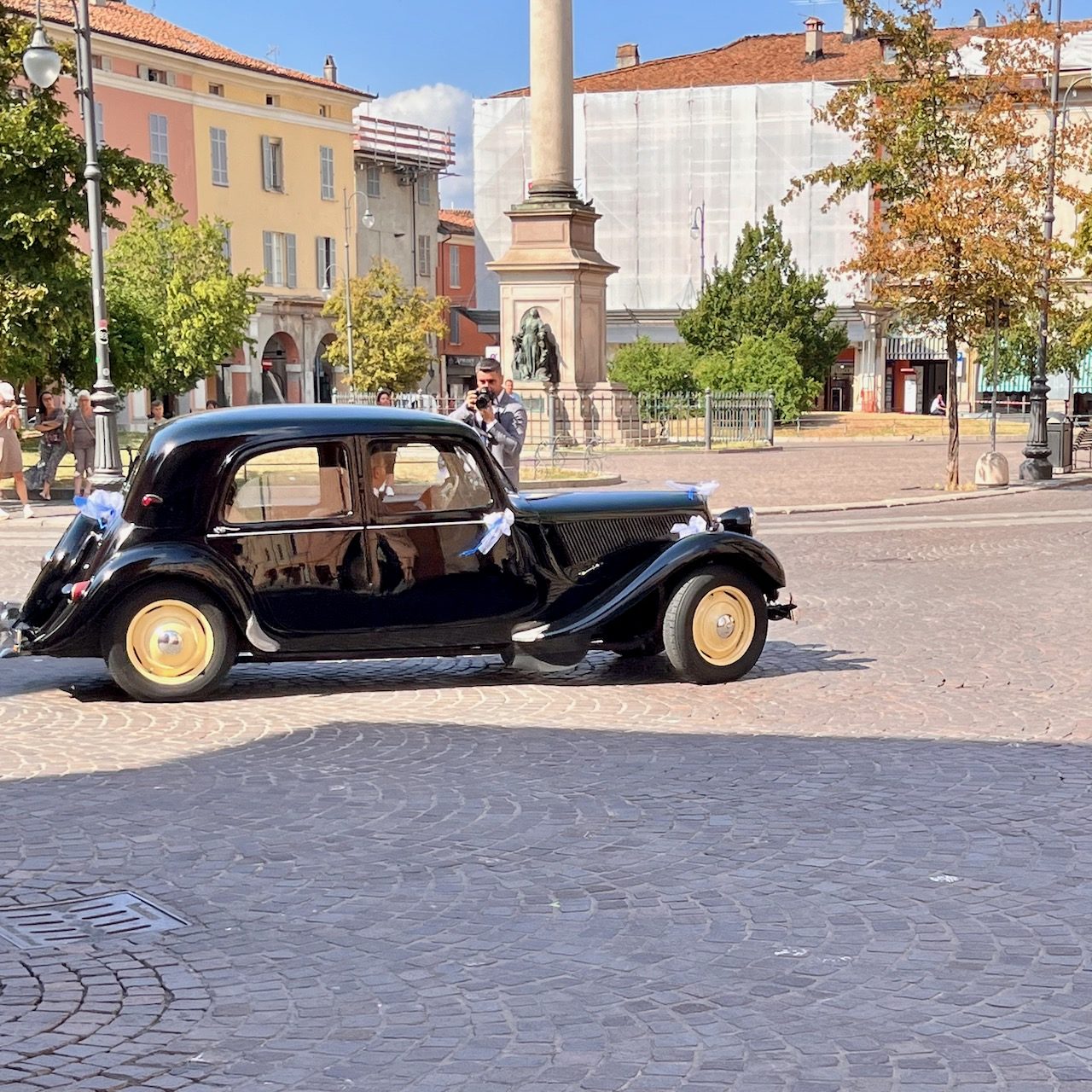
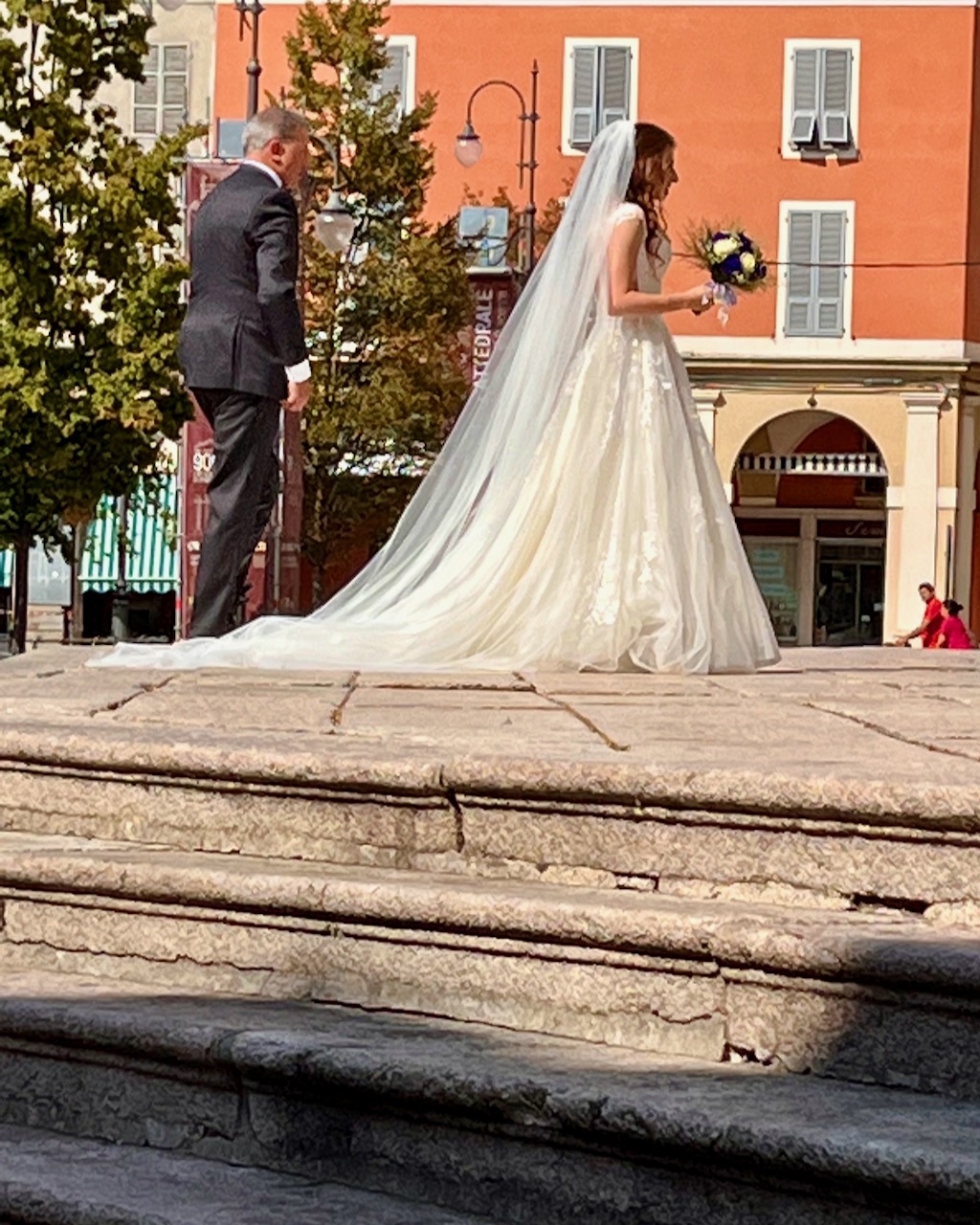
As long as we are here, I’ll add in the photos of the Duomo we took later on, or even the next day. One thing that amazes me is that there are so many churches that are sort of tucked in among other buildings in a city or, that other buildings have been constructed using the walls of the churches for support or as one side. Makes it hard to find the church. My point is that not all Duomos or other churches stand out alone separated from everything else like the duomos in Milan or Florence, the most popular and well-known. Here we go.
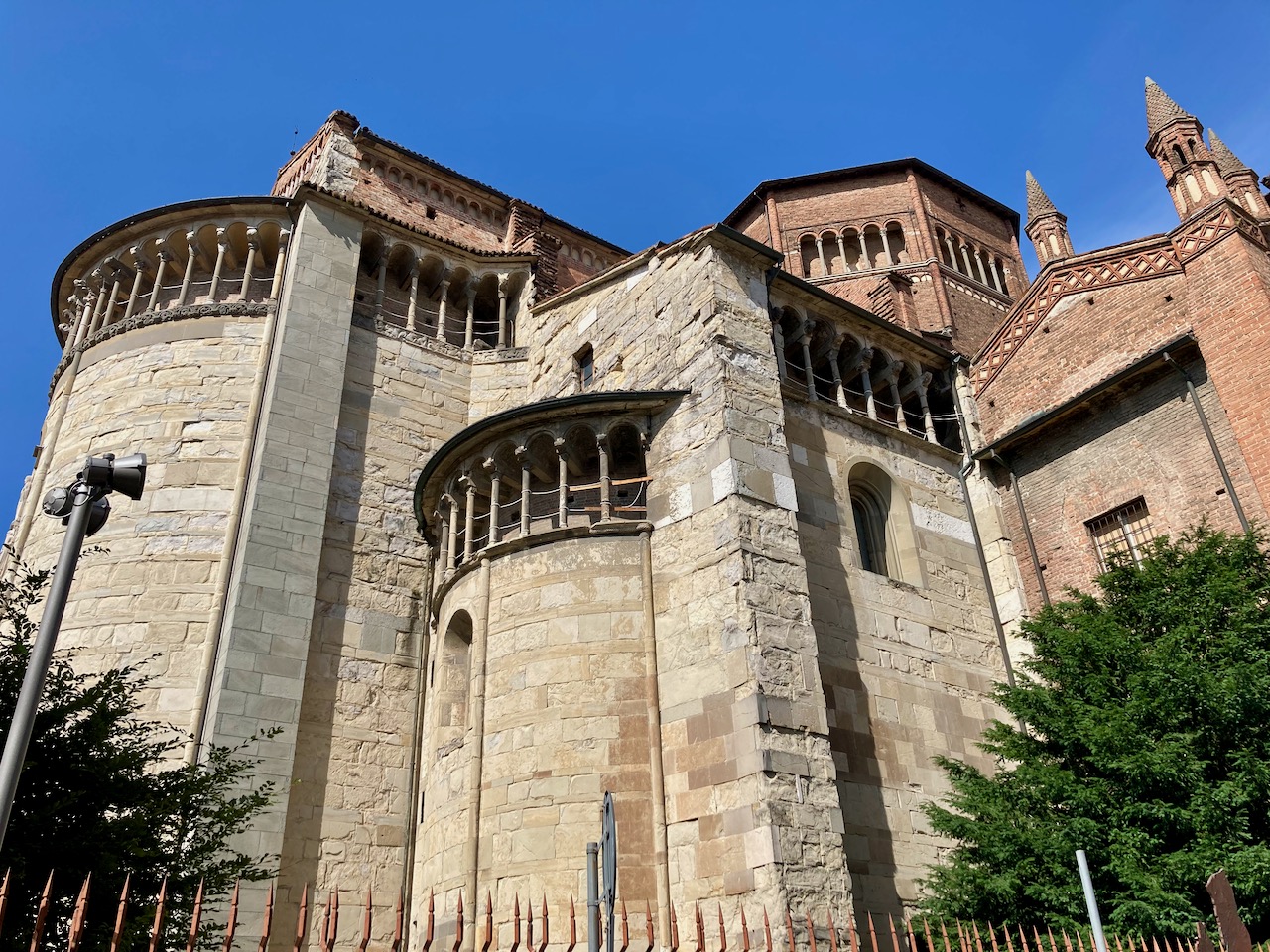
1000 year old church using 2022 technology.
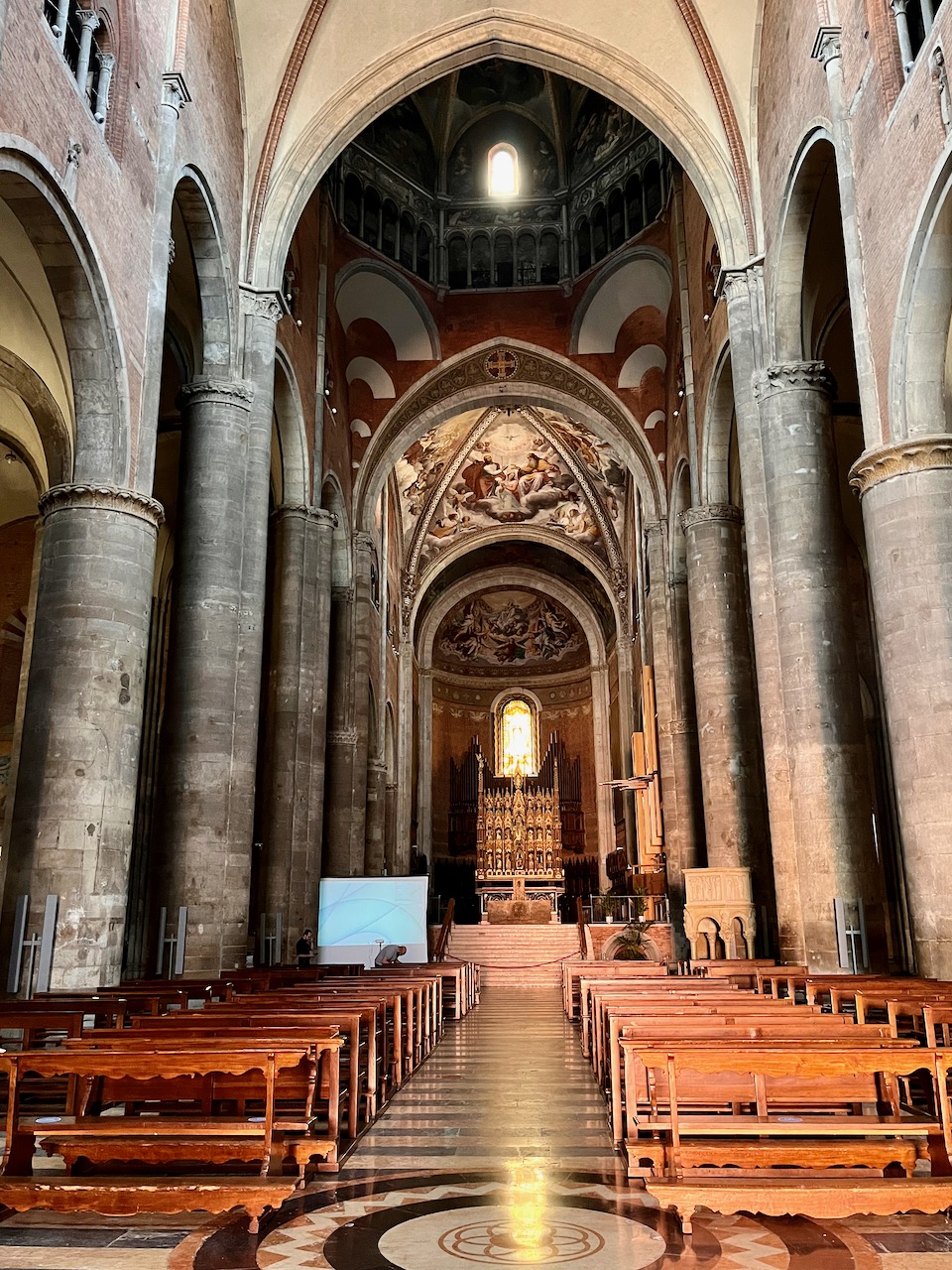
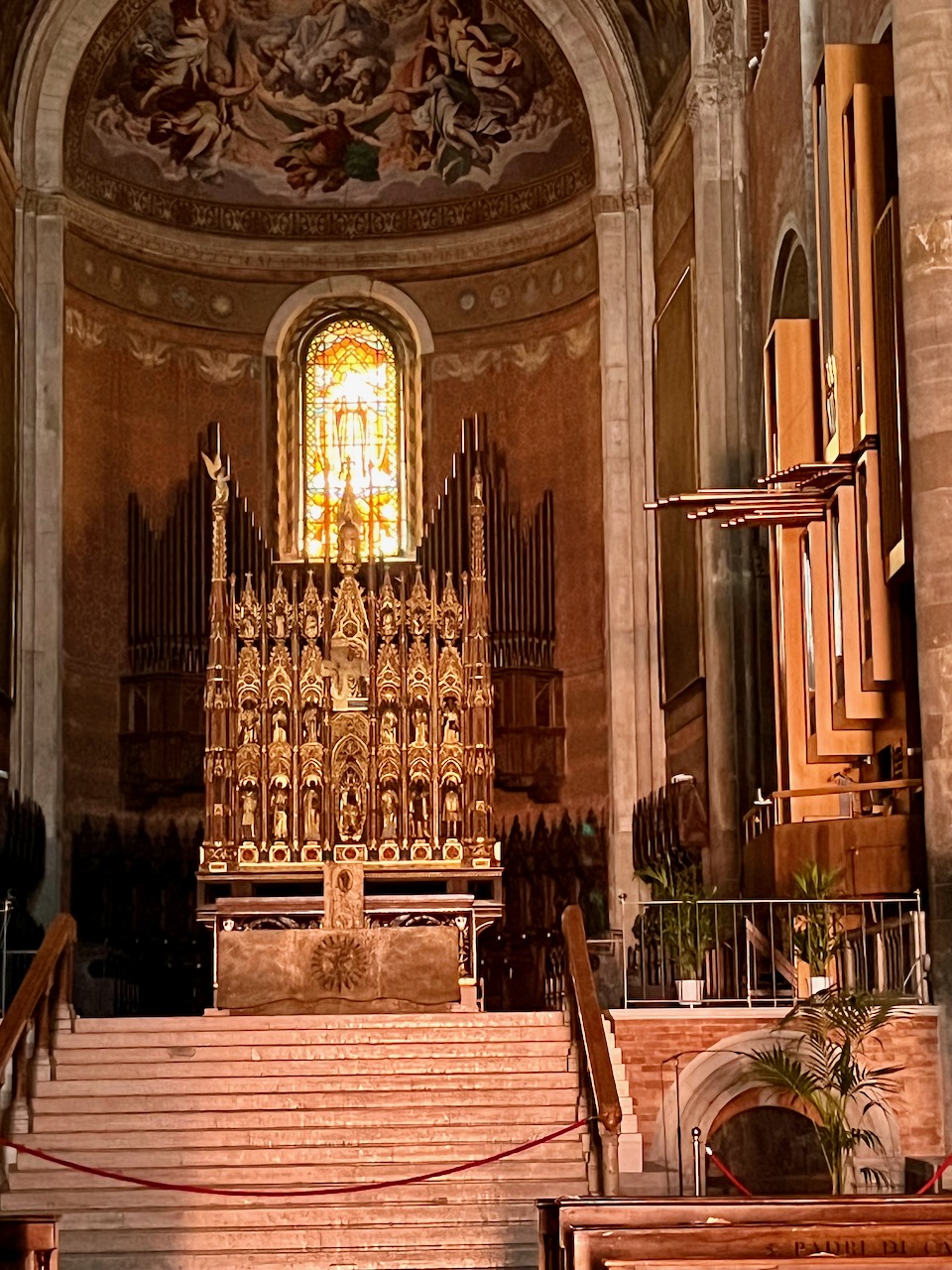
That’s a pretty fantastic altar in our book. But, check out the organ pipes. Above, there is a set of pipes behind the altar and there is another set that protrudes horizontally from the right side of the apse. Not only are there those pipes, there is another large set on the back of the right wall of the apse (photo below.) As much as we wanted to stay for either a mass or some sort of organ recital, nothing was scheduled during our time in Piacenza.
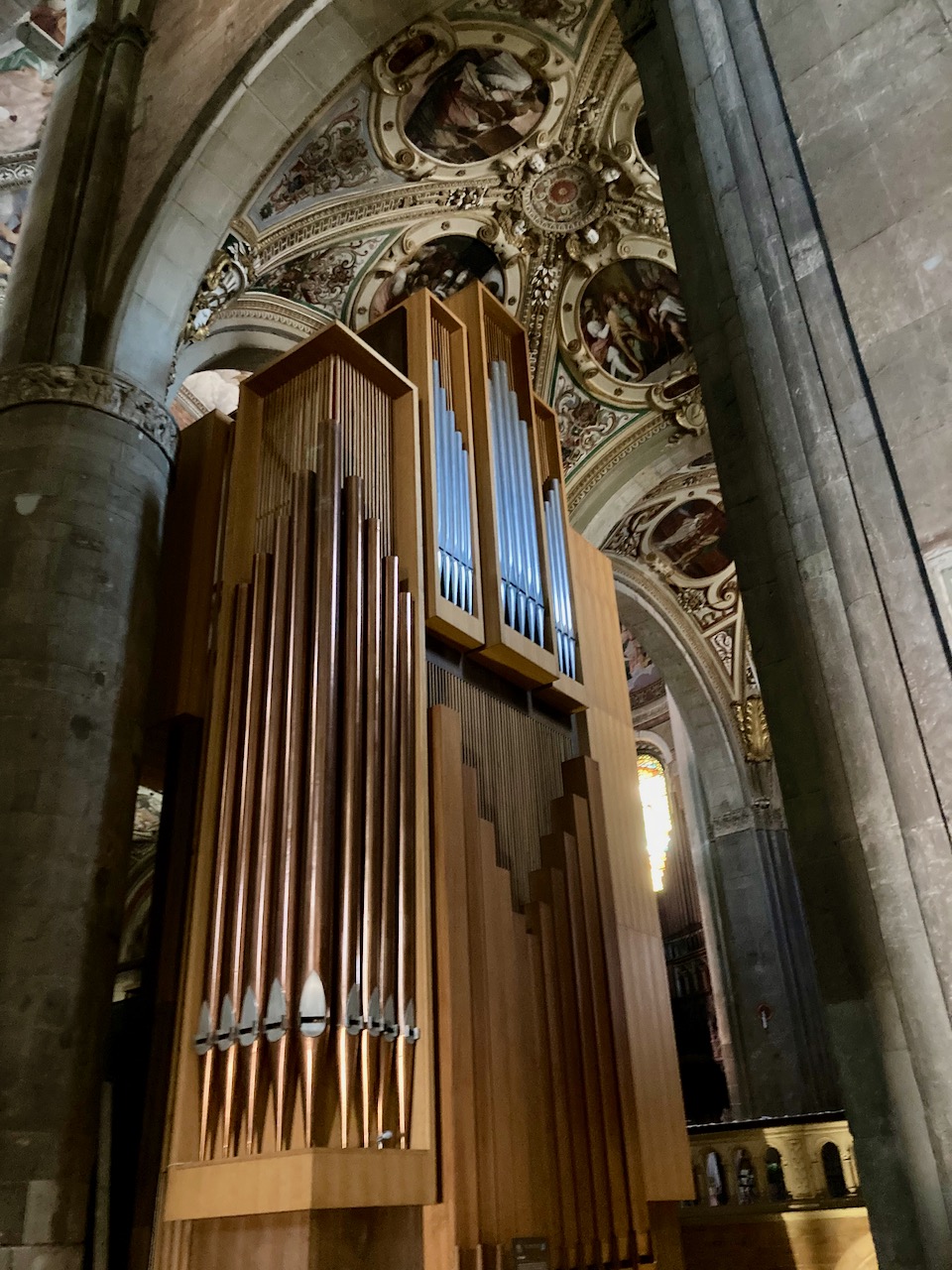
Gotta do it for Jim. We just noticed in this next photo that there are also vertical organ pipes on the right side. I’m not sure I can even imagine the majesty of the music played on this organ.
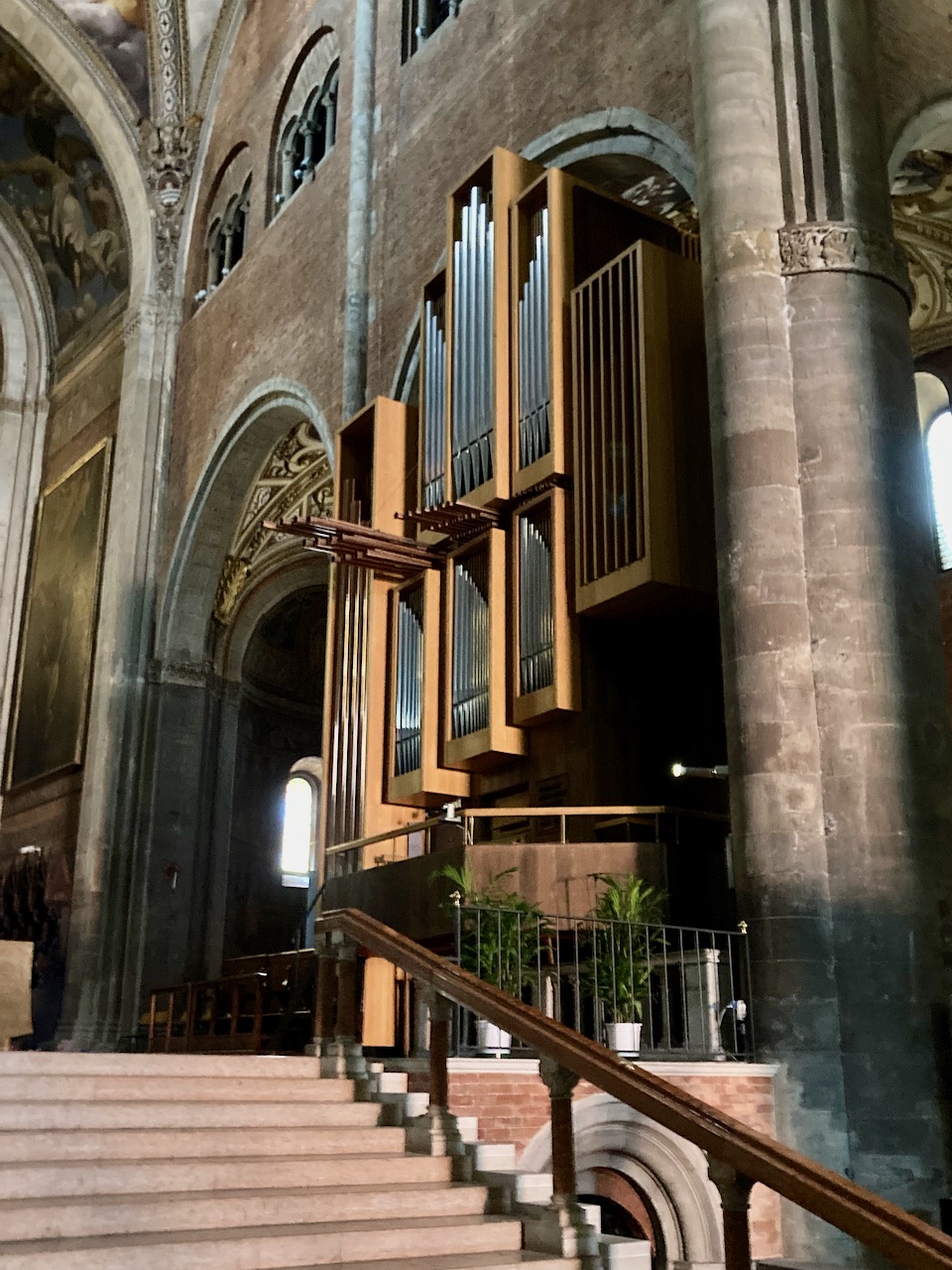
Finally, the church includes a very bright and clear painting of the last supper. We checked – it is different than the cenacolo Michelangelo painted and which resides in Milan but it looks nice to us.

The next day, we headed back up to the old part of the town, back where many of the churches, parks and theaters are located. First stop was Piazza Sant’Antonino since Saint Antonino is the namesake for Cousin Antonino. There on one of the corners is the Teatro Municipale, the municipal theater. It was inaugurated in 1804 with a huge festival for all the townspeople. And they have obviously taken care of this building
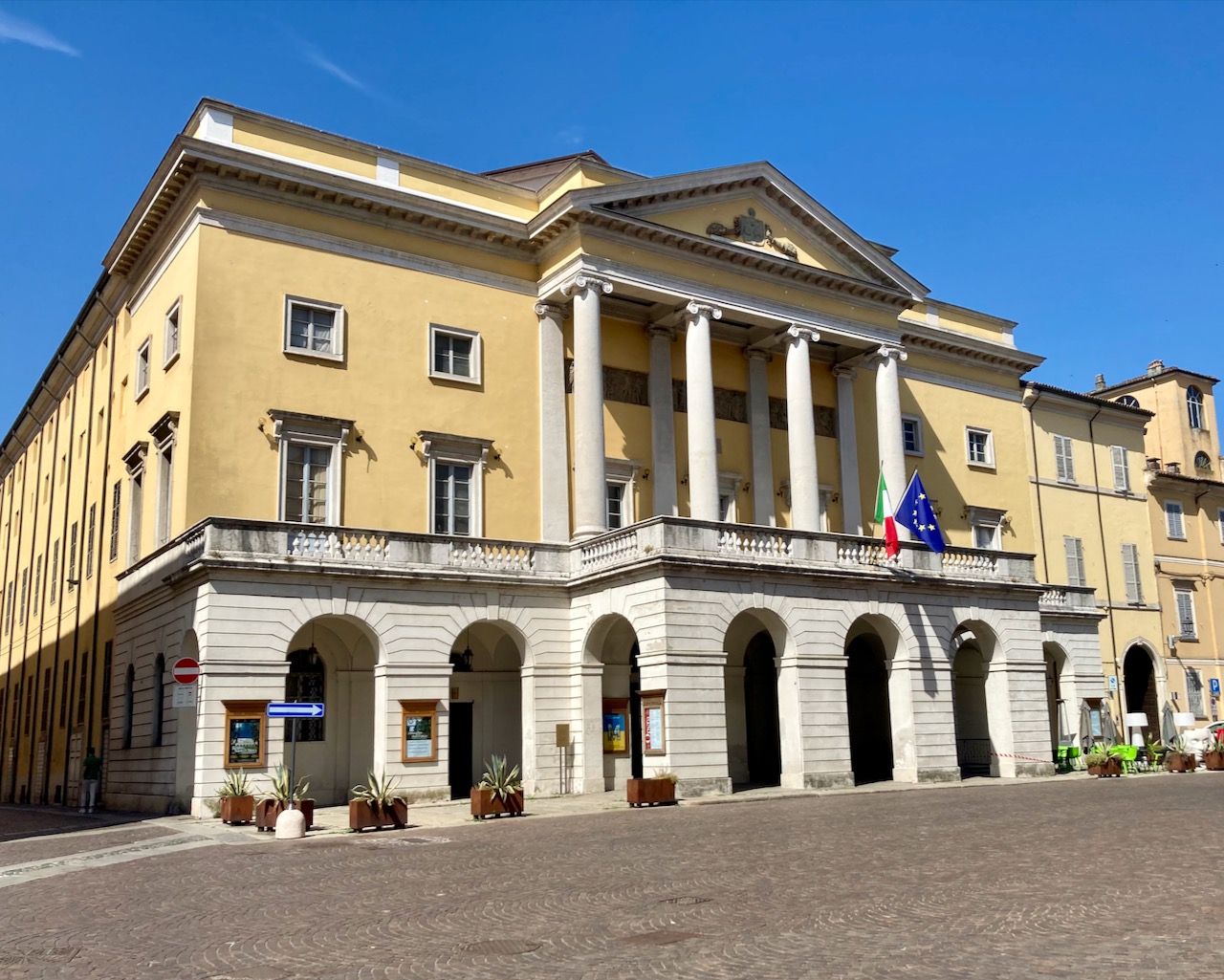
And then of course there would have to be the church after which the piazza was named, this one the Basilica of Saint Antonino. It is another big, and in this case tall, church with an eight-sided bell tower.
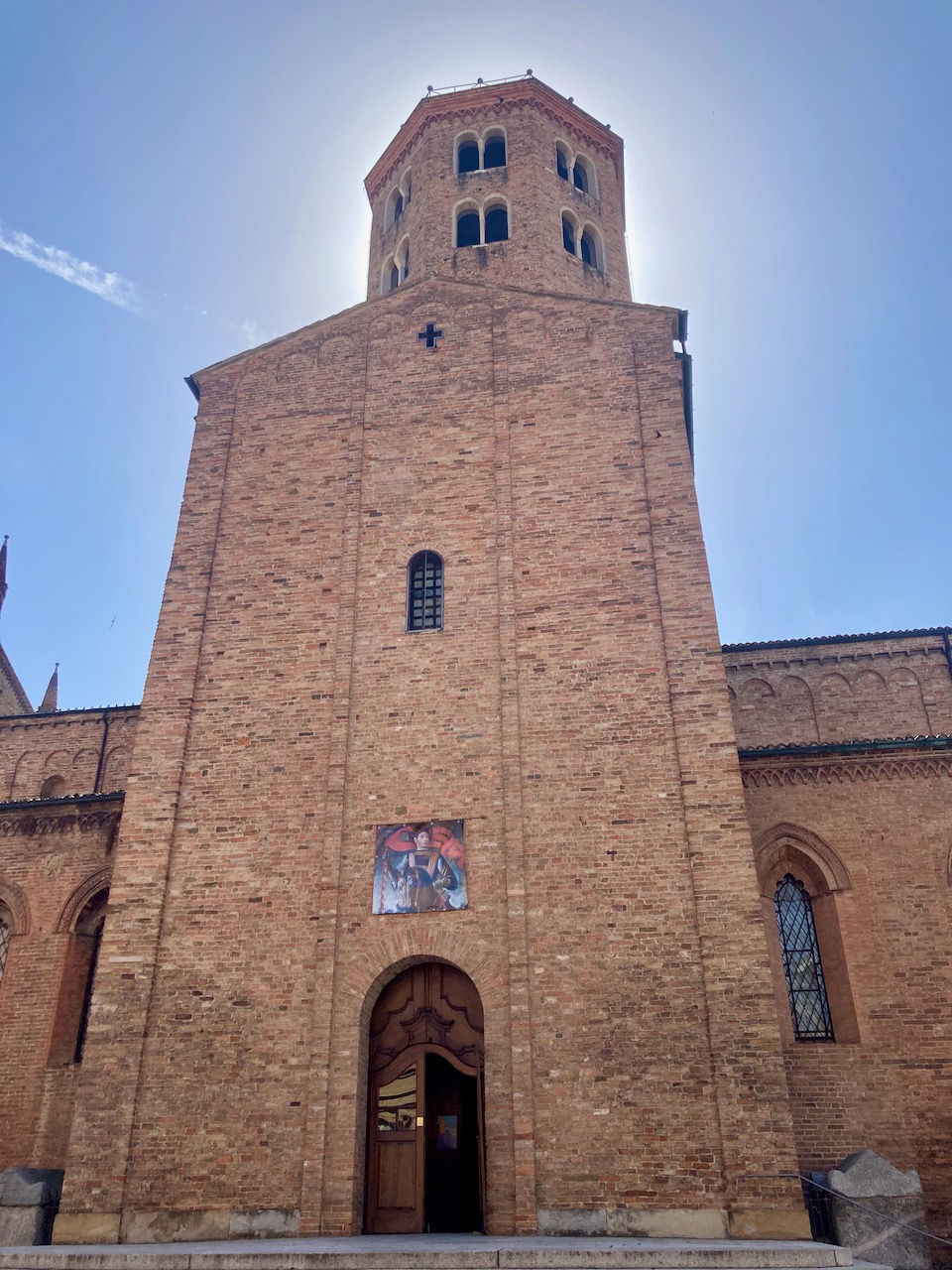
Next, we came to the Piazza dei Cavalli and several landmarks including the two statues of horses, the cavalli. Facing the piazza are the Palazzo Gotico and the Palazzo del Governatore. On the left side of the Palazzo Gotico, there is an alcove set aside to honor the Piacenza citizens who died in various wars. Almost every town we visited has such a memorial but then Italy lost a lot of it’s residents to the World Wars and their own wars of independence.
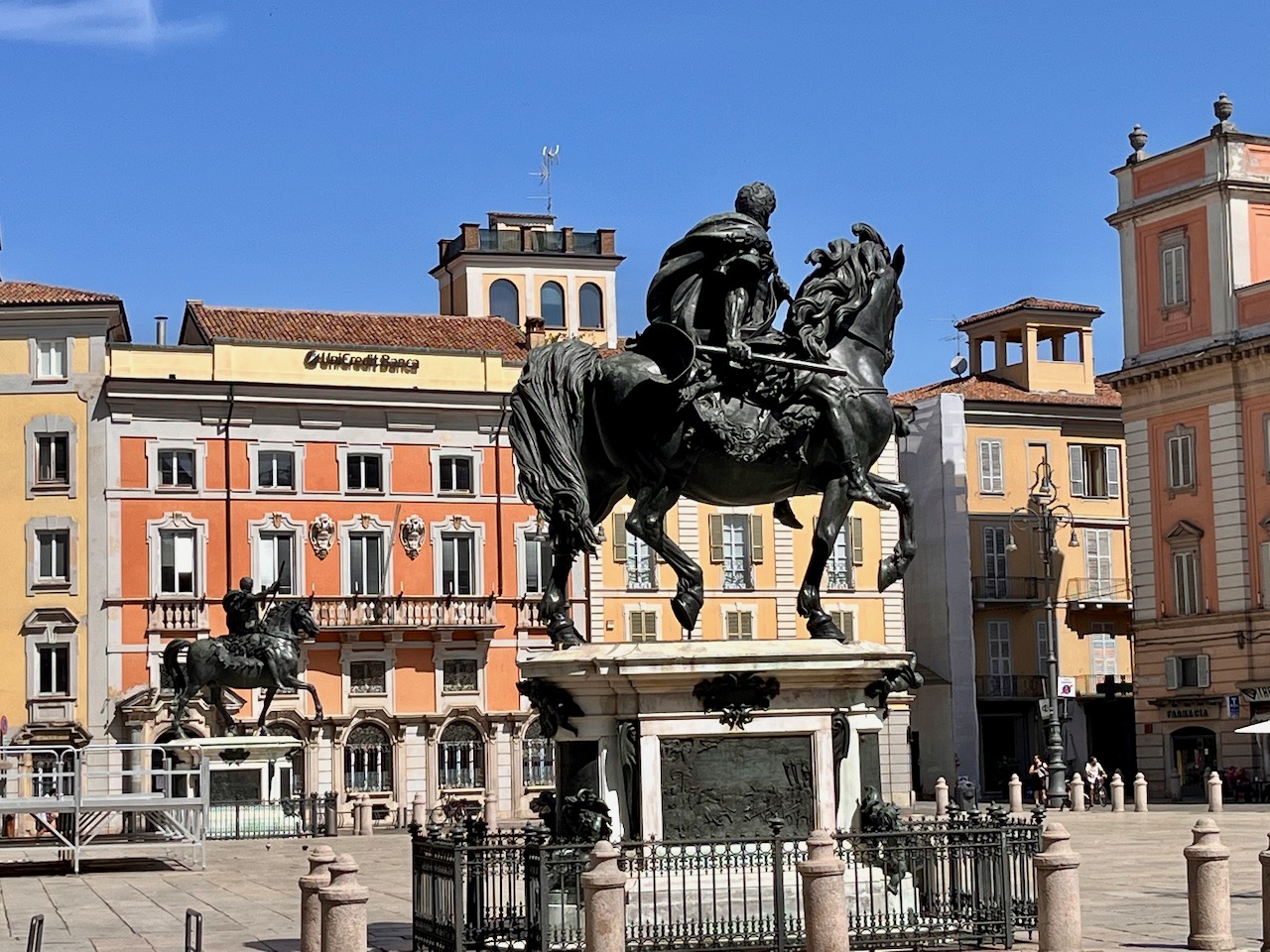

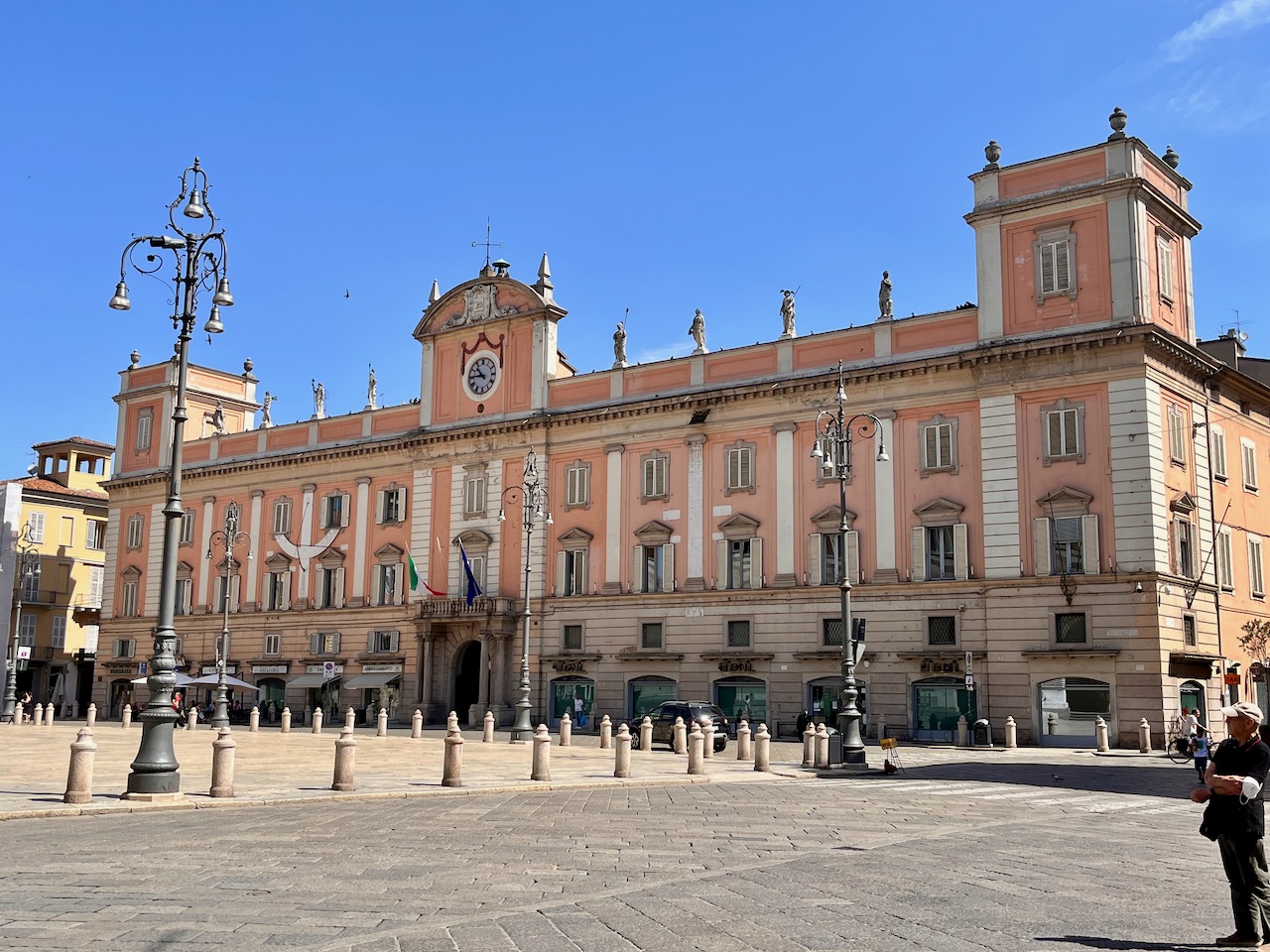
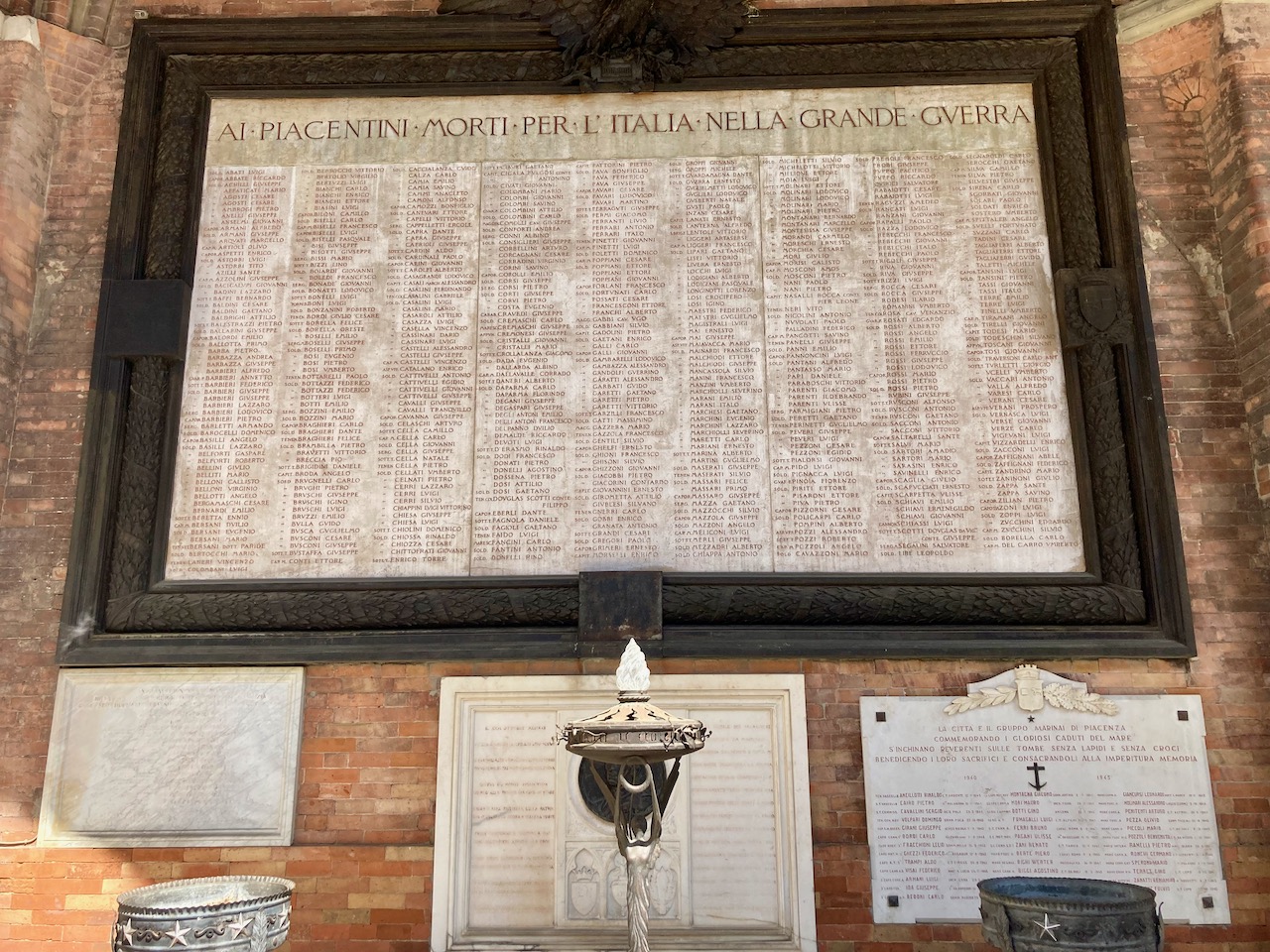
During his morning walks, Jim captured a couple of items. One was this tall, modern building that’s been added to one of the oldest towns in Italy but I guess you gotta do… It actually is apartments on all floors but the bottom three and it is named “Skyscraper of the Thousand.” I’m guessing that the 1,000 refers to the number of people who could live there? The other landmark is a fountain in the park across from the train station. Parks are plentiful in Italy and they seem to be in constant use.
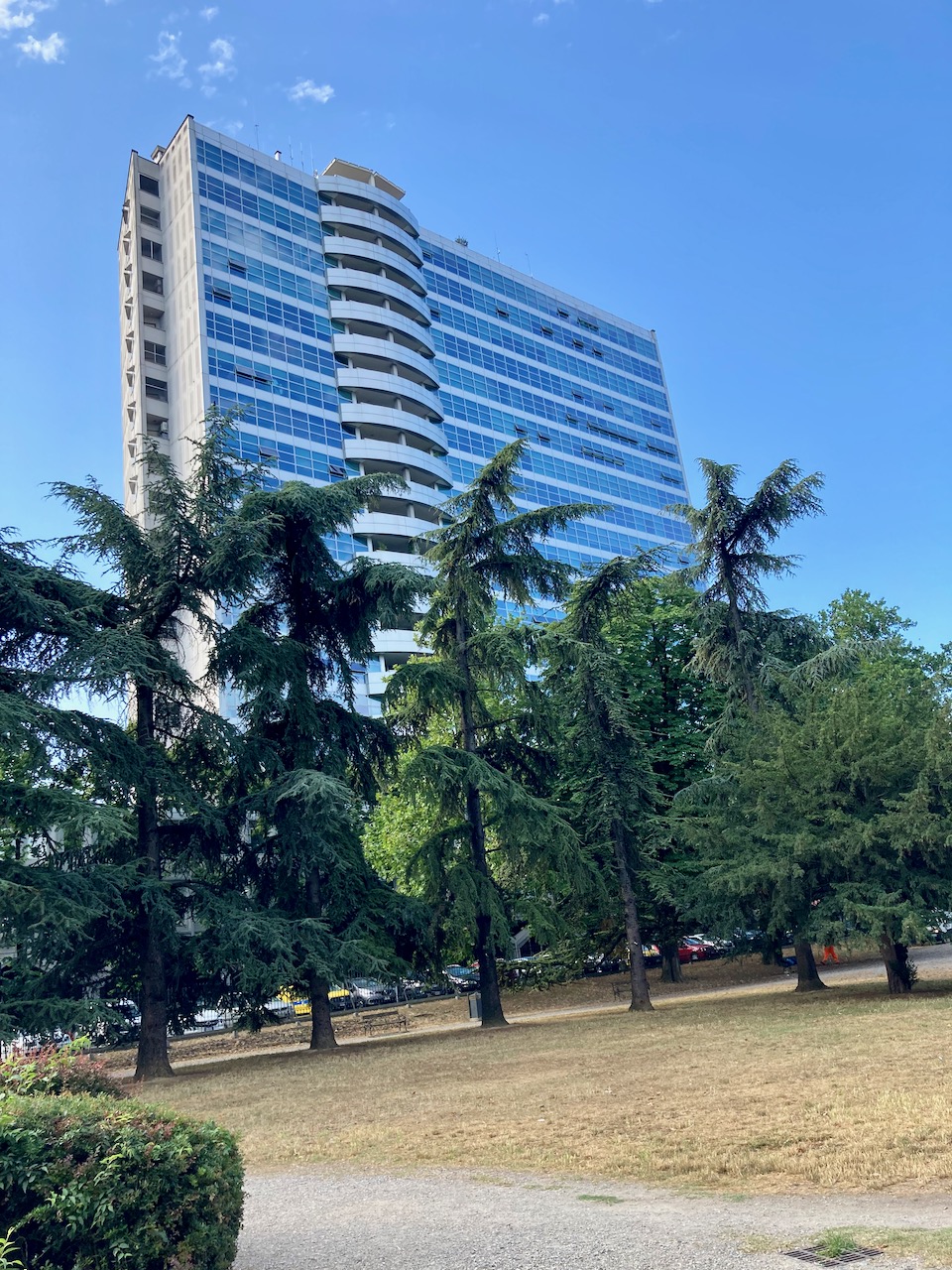

We could not let Piacenza go without at least one meal for the blog. Just down Via Roma from the hotel is this restaurant called Master Grill SVN. We were ready to eat so stopped in. Lots of locals were there as well. Anyway, not your gourmet restaurant but the food was good.
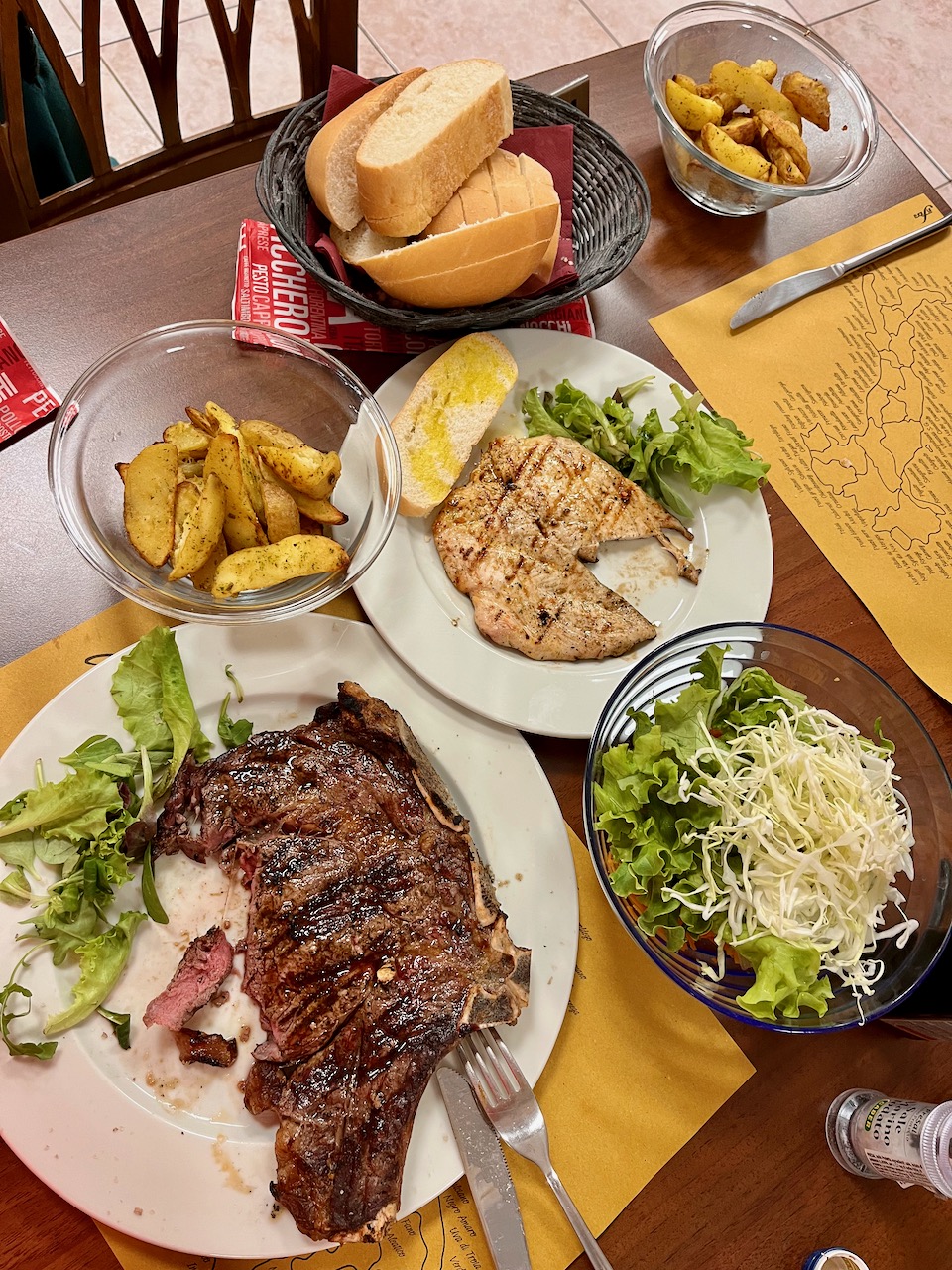
That about wraps up our time in Italy, at least until we get back in mid-July. It’s sure been a fun and busy three months and seeing the family topped it all off. It’s off to Basel, Switzerland tomorrow. My next report will be from there.
Whoops! I almost forgot the answer to the quiz question. The boys are Romulus and Remus and they are linked to the founding of Rome. You know it’s going to be a good story when their mother was a vestal virgin and their father was the god, Mars! They were born in the ancient city of Alba Longa near what would become the city of Rome. The king at the time saw them as a threat and ordered them drowned in the Tiber River. The servant who was given the task put them in a basket instead and set them off down the river. The god Tiberius saved them however sending the she-wolf Lupa to gather them up and care for them. In the end, Romulus killed Remus in a dispute over where the city of Rome should be built. The she-wolf with the boys has been a symbol of Rome since the city was formed. Ciao.
Thanks for the update! There is such a diversity of architecture in Piacenza. I appreciate all of the photos.
I also think that pipe organ in the duomo is very interesting. I’ve never seen pipes located around the nave like that; they are usually clustered together. I agree that it would be cool to hear a pipe organ concert in that church. I wonder what that would sound like.
Safe travels to Basel. I look forward to your next post!
The churches are amazing and it would have been wonderful to hear the organ music. Great pictures and interesting history. Can’t forget the delicious food either.